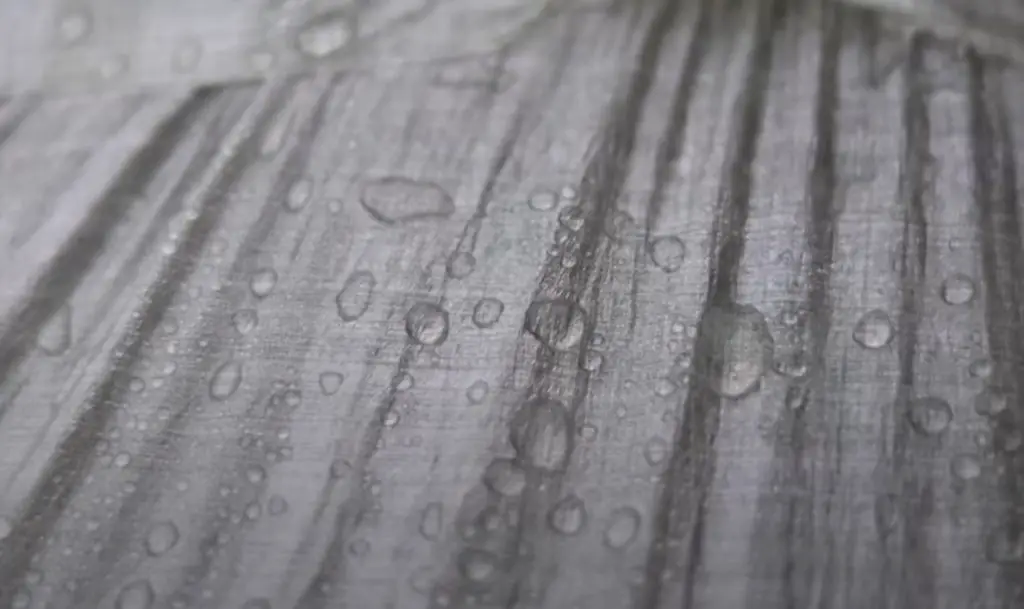Dyneema is a high-performance fiber known for its exceptional strength and durability. It is a brand name for Ultra High Molecular Weight Polyethylene (UHMWPE), which is a type of synthetic fiber. Dyneema is widely used in various outdoor applications, including ropes, cables, and fabric reinforcements.
In terms of longevity, Dyneema has a very long lifespan. It is highly resistant to abrasion, UV radiation, and chemicals, which helps it maintain its strength and integrity over time. However, it is not good at resisting sudden tears!
Dyneema fibers can typically retain their properties for several decades, even under harsh conditions. However, it’s important to note that the lifespan of Dyneema products can be influenced by factors such as frequency of use, care and maintenance, and exposure to extreme environments.
When comparing Dyneema to other outdoor materials like nylon or polyester, Dyneema generally offers superior strength and durability. Dyneema has a significantly higher strength-to-weight ratio compared to nylon or polyester fibers. It is around 15 times stronger than steel on a weight-for-weight basis. This means that Dyneema products can provide exceptional performance while being lightweight.
Additionally, Dyneema has low elongation and high resistance to stretching, making it less prone to sagging or losing its shape over time. In contrast, nylon and polyester fibers can experience some degree of elongation, especially when subjected to heavy loads or frequent use.

Nylon and polyester, however, have their own advantages. Nylon is known for its excellent abrasion resistance, flexibility, and moisture absorption properties. It is also more affordable compared to Dyneema. Polyester is valued for its resistance to UV radiation and moisture, as well as its ability to retain color vibrancy.
Ultimately, the choice of material depends on the specific application and the desired characteristics. Dyneema is often chosen for its exceptional strength, durability, and lightweight nature, making it a preferred option for high-performance outdoor gear and equipment.
How Long Does Dyneema Last?
When it comes to high-performance synthetic fibers, Dyneema is one of the most popular and widely used materials. Known for its incredible strength-to-weight ratio, UV resistance, and abrasion resistance, Dyneema is commonly used in applications ranging from marine lines and rigging to outdoor gear and personal protective equipment.
So, how long does Dyneema last? Dyneema can last up to 20 years or more, depending on several factors including usage, environmental factors, and maintenance. To better understand the longevity of Dyneema, let’s break down these factors in greater detail.
Usage
The lifespan of Dyneema can vary depending on how and where it is being used. For instance, in a marine environment where the material is constantly exposed to water, salt, and sunlight, Dyneema may experience accelerated wear and degradation. However, if properly maintained, Dyneema can still last a long time in these challenging environments.
Environmental Factors
Environmental factors play a significant role in determining the lifespan of Dyneema. Some of the factors that can affect Dyneema’s longevity include:
UV Exposure
Dyneema is known for its excellent UV resistance, which makes it an ideal material for outdoor applications. However, continuous exposure to sunlight can still cause the material to weaken over time. To minimize UV damage, consider using a UV-resistant coating or cover to protect the Dyneema.
Chemical Exposure
Dyneema is resistant to most chemicals, but prolonged exposure to certain chemicals may cause it to degrade. For example, strong acids and bases can harm the material. Always check the manufacturer’s guidelines for information on chemical compatibility.
Moisture
Dyneema is hydrophobic, meaning it repels water and resists moisture absorption. This characteristic helps to prevent the growth of mold and mildew, which can damage other types of synthetic fibers. However, prolonged exposure to water, especially saltwater, can cause Dyneema to lose some of its strength, so it is essential to rinse and dry the material regularly to maintain its integrity.
Maintenance
Proper care and maintenance can significantly extend the lifespan of Dyneema. Some steps to maintain your Dyneema products include:
Regular Inspection
Regularly inspect your Dyneema for signs of wear, such as fraying, discoloration, or damage. Early detection and repair of any damage can help to prevent more significant issues down the line.
Cleaning
Keeping your Dyneema clean is crucial in maintaining its longevity. Rinse off any dirt, salt, or debris using fresh water, and let the material air-dry completely before storing it. Avoid using harsh chemicals or abrasive scrubbers, as these can damage the material.
Storage
When not in use, store your Dyneema in a cool, dry place away from direct sunlight and extreme temperature changes. Proper storage can help to prevent UV damage and prolong the life of the material.
Conclusion
In conclusion, Dyneema can last up to 20 years or more, depending on usage, environmental factors, and maintenance. To maximize the lifespan of your Dyneema products, follow these tips:
1.Understand the impact of usageon the lifespan of Dyneema, and adjust your maintenance practices accordingly.
2.Minimize UV exposureby using a UV-resistant coating or cover.
3.Monitor chemical exposureand follow the manufacturer’s guidelines for chemical compatibility.
4.Take advantage of Dyneema’s hydrophobic propertiesto prevent moisture-related issues.
5.Inspect your Dyneema regularlyfor signs of wear and damage.
6.Clean your Dyneemawith fresh water and avoid using harsh chemicals or abrasive scrubbers.
7.Allow your Dyneema to air-drycompletely before storing it.
8.Store your Dyneema in a cool, dry placeaway from direct sunlight and extreme temperature changes.
9.Consult the manufacturer’s recommendationsfor specific care and maintenance guidelines.
10.Replace your Dyneemawhen it shows signs of significant wear or loss of strength.
By following these guidelines and giving your Dyneema the proper care it deserves, you can ensure that it will continue to provide you with exceptional strength, durability, and performance for many years to come.




